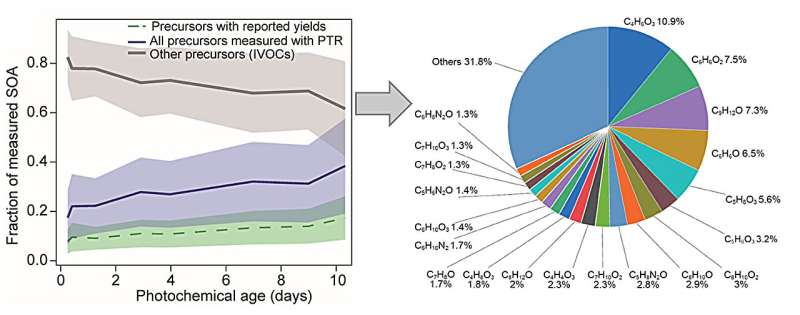This article has been reviewed according to Science X's editorial process and policies. Editors have highlighted the following attributes while ensuring the content's credibility:
fact-checked
trusted source
proofread
Uncovering the dominant contribution of intermediate volatility compounds to biomass-burning organic aerosols

Biomass burning, including wildfires and residential heating, emits a variety of air pollutants and has a series of negative impacts on the environment.
Biomass burning is one of the world's largest sources of atmospheric trace gases and aerosols, and the transport and evolution of these pollutants in the atmosphere affect stratospheric ozone, radiation balance, cloud formation, etc. With global warming, the frequency and intensity of wildfires keep increasing, and the environmental impact of biomass burning has become increasingly important.
The latest research published in National Science Review demonstrated that intermediate volatility compounds (IVOCs) are the major contributors to secondary organic aerosols formed from biomass-burning emissions. This study is led by Professor Kun Li (Shandong University, China) and Professor Andre Prevot (Paul Scherrer Institute, Switzerland).
"This is a breakthrough for biomass-burning aerosol research," says Kun Li, the first author and corresponding author of the paper. "Because the main contributors of secondary organic aerosols were thought to be volatile organic compounds (VOCs) rather than IVOCs in previous studies."
The way that the researchers use to achieve this is the newly-developed laminar-flow oxidation reactor, which can significantly reduce the wall loss of oxidation intermediates and, therefore, obtain a more accurate aerosol production. "We developed this reactor a couple of years ago but it was the first time we applied it for studying biomass-burning emissions," says Li.
This study found that IVOCs contributed about 70% of secondary organic aerosols in biomass-burning emissions, more than twice as much as VOCs. In addition, the composition, concentration, and yield of secondary organic aerosols generated by IVOCs were analyzed in detail. The results show that the potential of IVOCs to generate secondary organic aerosols is high, with an average yield of about 100%.
"This is the first experimental evidence of the dominant contribution of IVOCs to biomass-burning organic aerosols," says Li. "The results indicate that previous studies on secondary organic aerosol formation may have significantly underestimated the contribution of lower volatile compounds, such as IVOCs and their oxidation products, in complex emission sources."
More information: Kun Li et al, Uncovering the dominant contribution of intermediate volatility compounds in secondary organic aerosol formation from biomass-burning emissions, National Science Review (2024). DOI: 10.1093/nsr/nwae014
Provided by Science China Press




















